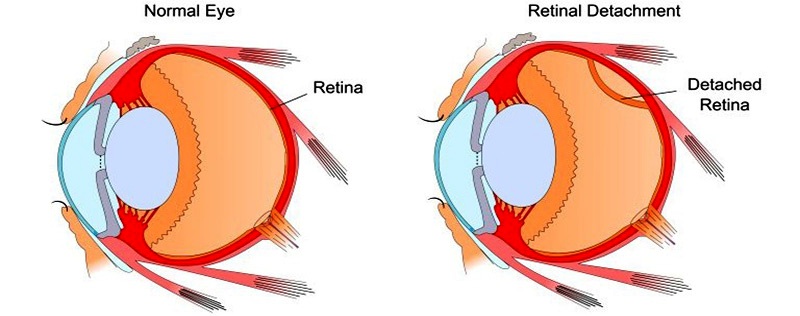What you need to know about a Detached Retina Treatment Procedure
Contents
- 1 What you need to know about a Detached Retina Treatment Procedure
- 2 What does the Procedure Involve?
- 3 How Long Should You Stay in the Area?
- 4 What’s the Recovery Time Like?
- 5 What Aftercare Should You Consider?
- 6 What is the Success Rate for Detached Retina Treatment Procedure?
- 7 Are there Alternatives to Detached Retina Treatment Procedure?
- 8 What Should You Expect Before and After the Procedure?
A detached retina is an emergency situation that occurs when your retina – a thin layer of tissue at the back of your eye that processes light – pulls away from its normal position. If left untreated, the condition can lead to vision loss. There are several types of surgery to treat a detached retina, which are performed depending on the severity of the retinal detachment.

What does the Procedure Involve?
There are five main types of detached retina treatment, laser surgery, freezing (cryopexy), pneumatic retinopexy, scleral buckle, and vitrectomy. Laser surgery and cryopexy are performed to repair a tear in the retina if it is diagnosed early enough, both are done under local anesthetic. Pneumatic retinopexy works for a small tear that is easy to close, it involves injecting a tiny gas bubble into the vitreous. If your retina has completely detached, your doctor may recommend scleral buckling, which involves suturing a piece of silicone material to your sclera (the white of your eye) over the affected area. If your case is very serious, your doctor may perform a procedure known as vitrectomy. During a vitrectomy, the vitreous is removed and replaced with a saline solution. Depending on the size of the tear on your retina, your doctor may use various combinations of these detached retina treatments. For scleral buckling and vitrectomy, you may be given local or general anesthetic.
How Long Should You Stay in the Area?
You must stay in the local area for 6 weeks because you cannot fly until the air bubble has gone from your eye. Before you fly home, make sure you have your doctor’s approval as the air bubble may expand with cabin pressure and cause severe damage.
What’s the Recovery Time Like?
If you have a scleral buckle or vitrectomy, the recovery period may take around 4 weeks until you can go back to work and resume your normal activities. However, laser surgery and cyropexy have shorter recovery time, usually around 10 to 14 days. Make sure to eat a healthy diet and avoid vigorous exercises during the recovery period.
What Aftercare Should You Consider?
Your doctor will schedule a follow-up checkup to see whether the procedure was effective. You may want to make some lifestyle changes after the procedure. Keep your diabetes or high blood pressure under control and get regular eye exams.
What is the Success Rate for Detached Retina Treatment Procedure?
Detached retina treatment is known to have a high success rate, with a 90% repair rate. The success usually depends on the seriousness of the tears and detachment. Surgery carries some risk and side effects, such as serious reaction to anesthesia and permanent loss of vision if the retina is damaged before reattachment.
Are there Alternatives to Detached Retina Treatment Procedure?
A detached retina needs to be treated to prevent vision loss. There is currently no alternative besides surgery.
What Should You Expect Before and After the Procedure?
A detached retina can be fatal and you can lose your vision forever. If you have a detached retina get treatment as soon as you are diagnosed with the condition, your vision will improve within several months.
For an in-depth analysis of a Detached Retina Treatment Procedure, watch this short video.
To check prices or to book a Detached Retina Treatment Procedure in Thailand or anywhere else in the world, head on over to MyMediTravel now!

